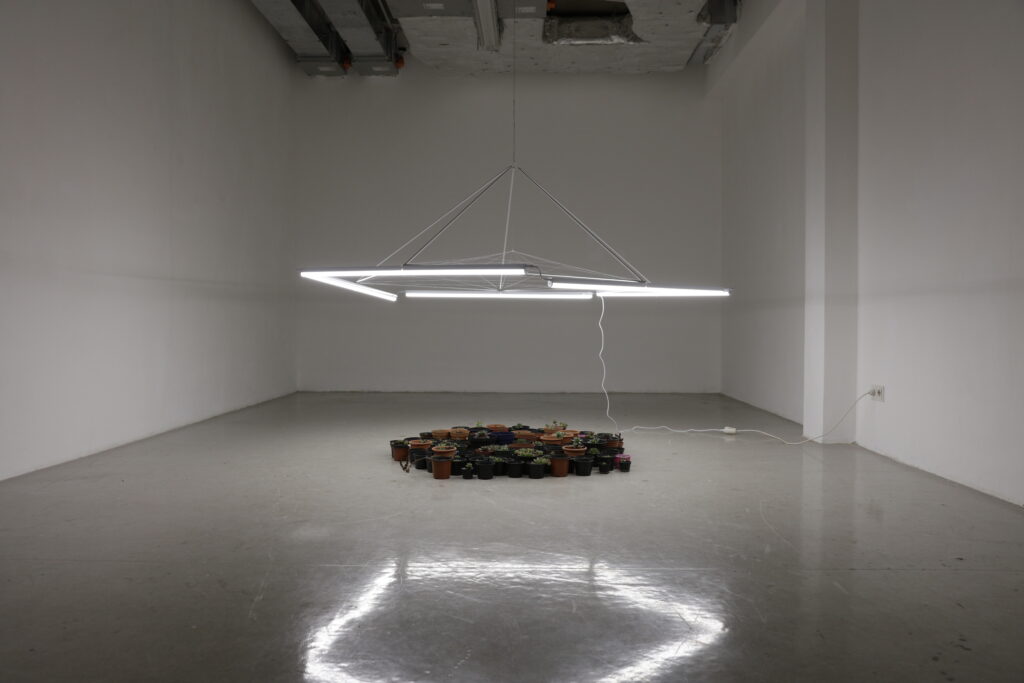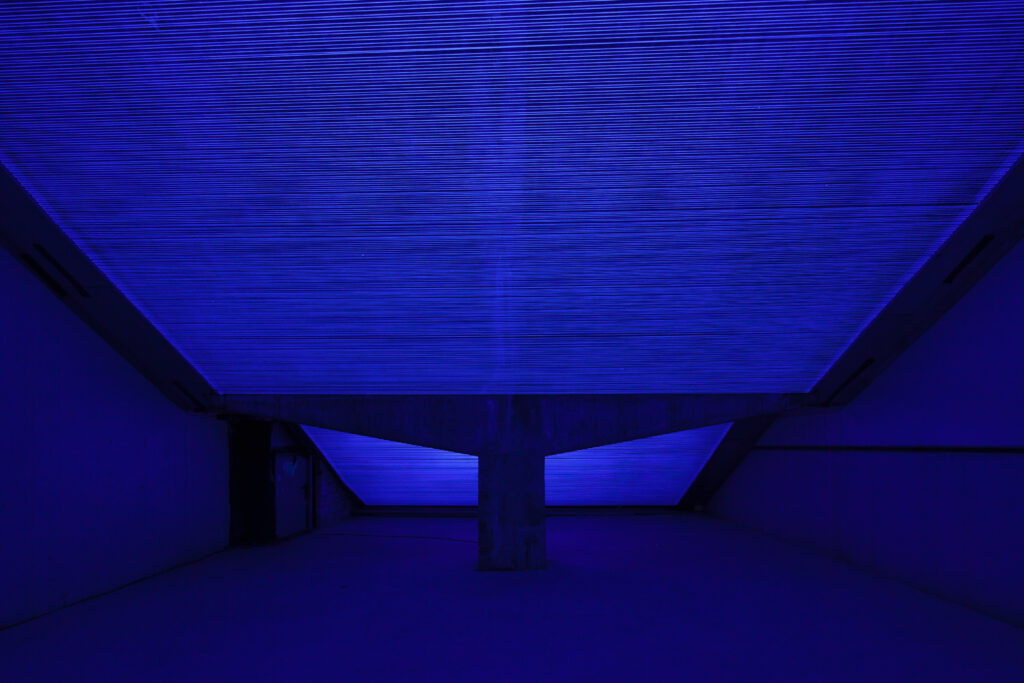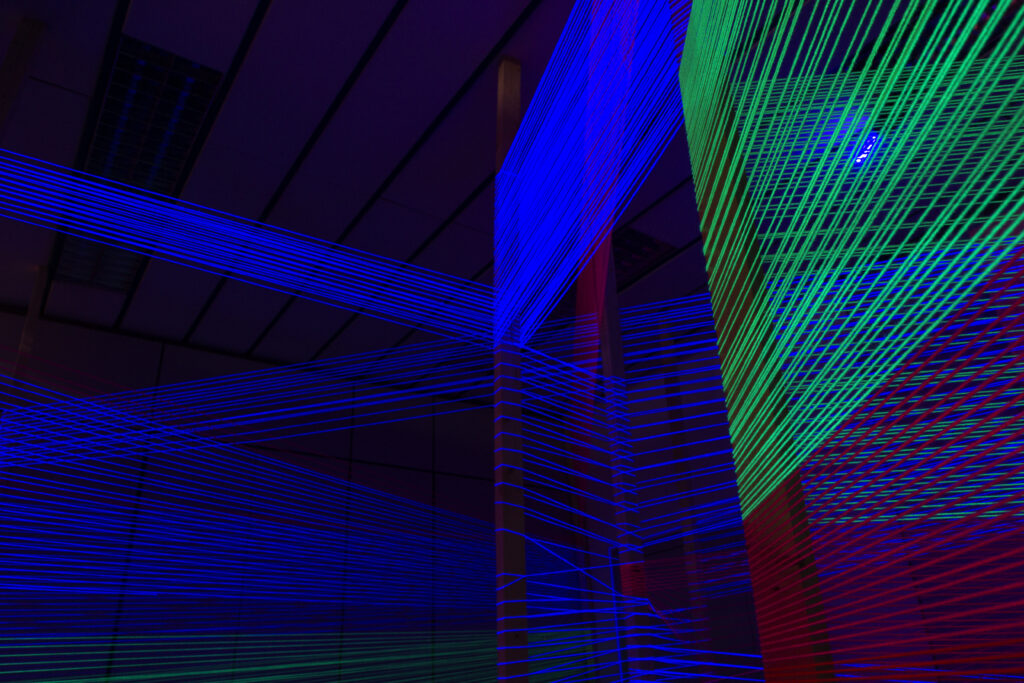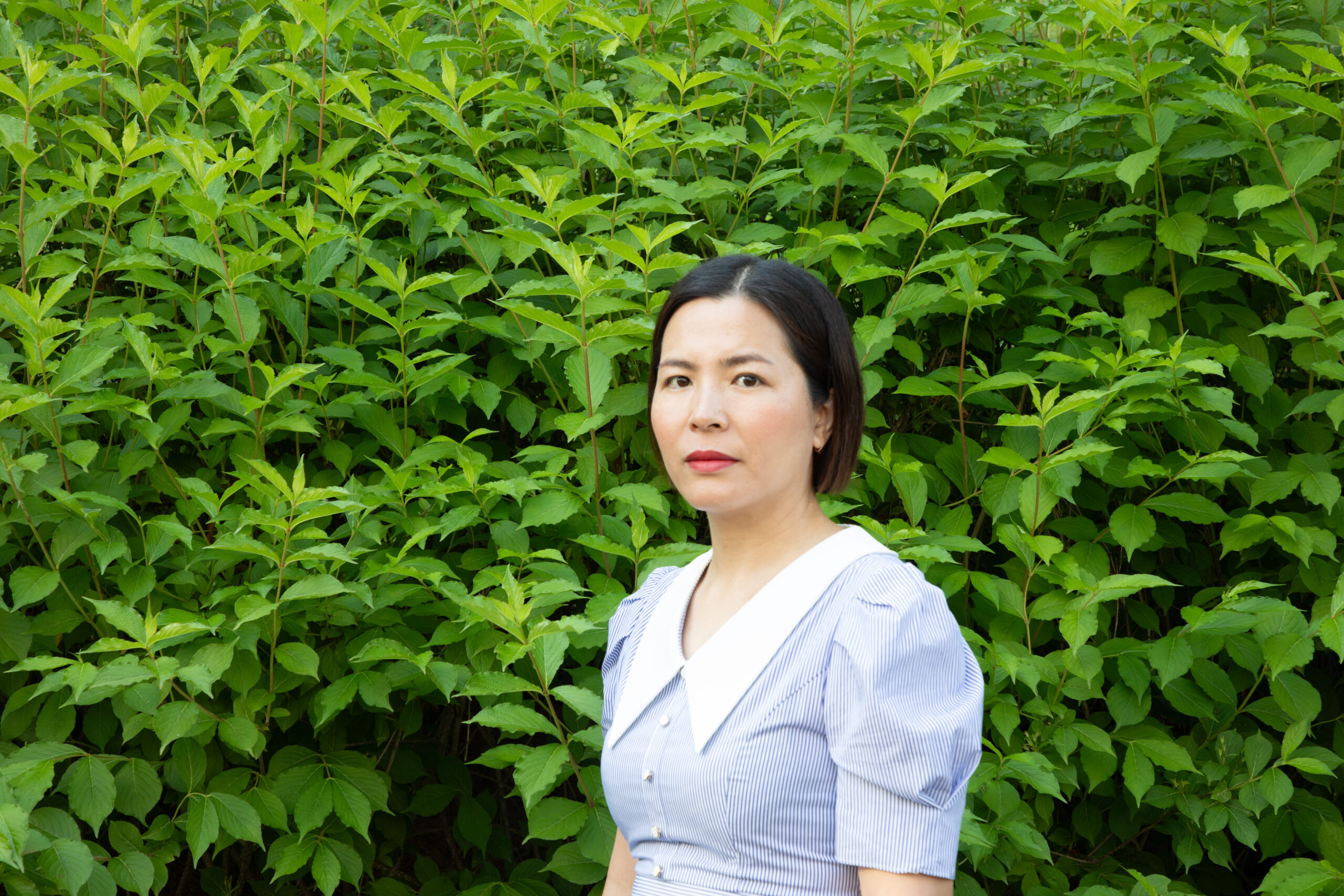Flower Pot Pentagons, Numerical Sequences, and Phosphorescent Strings
Biennale 2024 Artist Kim Hyeong Suk
By Kang Hyunsuk (Jennis)
The 15th Gwangju Biennale is opening this month: September 7. Along with its main exhibition halls, it features 31 “pavilions” spread across cultural venues in Gwangju. To celebrate this year’s Biennale, I have had the opportunity to interview one of the participating artists, Kim Hyeong Suk. Born and raised in Naju, just south of Gwangju, Kim studied Western painting at Chosun University and furthered her studies in Germany. To prepare for the interview, I reviewed numerous photographs of her works.
Jennis: Thank you so much for agreeing to this interview. I see that you majored in Western painting at Chosun University and then studied in Germany for 12 years. I’m curious – how did you first become interested in the world of art?
Kim Hyeong Suk: Honestly, I never imagined I would pursue a career in art when I was young. I started attending an art academy with a friend who loved painting, and most of these academies were focused on preparing students for art college. That’s how I naturally ended up in art school.
Jennis: What motivated you to study abroad in Germany?
Kim Hyeong Suk: After finishing the first semester of my master’s program, I felt this urge to find something unique to myself – something I’d been questioning since my college years. That led me to gather the courage to study in Germany.

Jennis: One of your artwork photos features a pentagon-shaped light installation with small flower pots arranged in a pentagon. What does this piece represent?
Kim Hyeong Suk: I see the number five as perfect. The Greek philosopher Aristotle talked about five elements: water, fire, air, earth, and the ether of the celestial spheres. Similarly, in Eastern philosophy, we recognize ohaeng (오행), known as the Five Phases of Transformation, or the Five Elements. This inspired me to create an installation using collected flower pots arranged as a pentagon.
Jennis: Looking closely at the flower pots, I noticed they contain fleshy succulents. What inspired you to create the pentagon of succulents?
Kim Hyeong Suk: I became fascinated with the Fibonacci sequence. This sequence follows a specific pattern: It starts with two 1s, and each subsequent number is the sum of the two preceding numbers, resulting in 1, 1, 2, 3, 5, 8, 13, 21, 34, and so on. When expressed in shapes or forms, the sequence creates beautifully balanced designs often found in nature. For instance, the number of petals on flowers and the order of leaves on a stem often follow this sequence.
During my time in Germany, I worked as a mail carrier to support myself. While delivering mail in different neighborhoods, I encountered a wide variety of succulents. Captivated by the Fibonacci sequence’s beauty at the time, I began collecting these succulents, which eventually led to the creation of this installation.


Jennis: One photograph of an installation features intersecting lines in various colors forming a three-dimensional space. What does this piece express?
Kim Hyeong Suk: That piece began with geometric exploration through light drawing. I started by drawing three-dimensional cubes and then moved on to hypercubes, which are four-dimensional equivalents, creating the Space in Space series. I used countless strings spaced about one centimeter apart and projected black light over them, creating blue phosphorescent lines that weave through the dark spaces. Since I moved houses frequently in Germany, transporting heavy artworks was challenging, so I opted for installations that could be dismantled and later captured in photographs.
Jennis: It’s impressive that you’re an installation artist who leaves no physical works behind. But as a working artist, don’t you need buyers for your pieces to continue creating?
Kim Hyeong Suk: Yes, that’s something I do think about, which is why I’m currently reconsidering the direction of my future creative work.
Jennis: You will be exhibiting at this year’s Biennale. What are you planning to exhibit and where will your contribution be?
Kim Hyeong Suk: I’ll be exhibiting at the Yangnim Cultural Center in Yangnim-dong. Without giving too much away, my work addresses gentrification. My family home, where I lived for 18 years, was demolished due to new urban development. Seeing personal memories being displaced by economic forces reminded me of what’s happening in Yangnim-dong. As more people visit the beautiful area, original residents are leaving, and property prices are rising. My exhibition will explore this narrative.
Jennis: It sounds like a fascinating exhibit. I look forward to seeing it. Thank you for this insightful interview.
After the Interview…
Interviewing Kim Hyeong-suk, an artist who seeks to find and share the aesthetic harmony of the universe and nature – seen in patterns like flower petals, seashells, and spiral galaxies – left me thinking of her as someone striving to uncover the origins of beauty. And in her quest to understand the origins of human-perceived beauty, I found a profound sense of artistry.
| Education 2017–2018 Meisterschüler in Film with Vert. Prof. John Skoog, Kunsthochschule Mainz, Germany 2011–2017 Diploma in Media Art with Prof. Dieter Kiessling, Kunsthochschule Mainz, Germany 2002–2006 B.F.A in Painting, Chosun University, Gwangju, South Korea Scholarships & Awards 2017 Gutenberg Stipendium, Landeshauptstadt Mainz, Rheinland Pfalz, Germany 2017 Member of Videocloop, Oline Video Bibliothek, Loop Barcelona, Spain 2017 Finalist, Loop Discover Award, Barcelona, Spain 2016 Winner, Kunstam Bau for Rathaus Grünstadt, Rheinland Pfalz, Germany 2016 Film and Media Young Academics Grant, Rheinland Pfalz, Germany 2015 Exhibition Grant, “World Citizen.” Rheinland Pfalz and Art School, Mainz, Germany Artist in Residence 2021 Arthub Online, Artist in Residence 2021 International Residency Studio GMA, Museum of Art, Gwangju, Korea 2020 Artist in Residence, Gwangju Cultural Foundation, Korea Selected Solo Exhibitions 2022 Online Residency, VR Gallery, Arthub, Seoul, Korea 2021 Line, Side, and Color; Smart Station, Naju, Korea 2018 Lumen, City Hall, Grünstadt, Rheinland Pfalz, Germany 2017 Epidermis, “3xKlingeln,” Heidelbergerfaßgasse 14, Mainz, Germany 2013 Space in Space, “3xKlingeln,” Dominikanerkloster St. Bonifaz, Mainz, Germany |
The Interviewer
Kang Hyunsuk (Jennis) grew up in a place known for the City of Art – Gwangju. As a hobby, she took art classes at the Gwangju Museum of Art for several years. Through these experiences, she realized that there are so many wonderful artists in this area. Visiting exhibitions became her much-loved hobby. She has been contributing art articles in this column since 2020.




